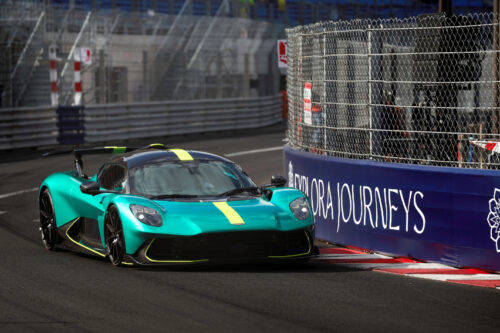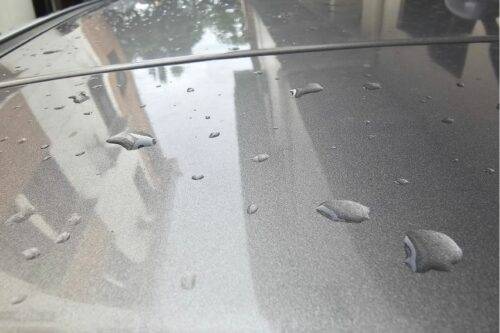The McLaren Solus GT is an exclusive Gran Turismo-inspired hypercar

MANILA: The McLaren Solus GT, a magnificent interpretation of a concept car from the screens of virtual racing into an intense representation of track driving engagement that will thrill in the real world, was unveiled by McLaren Automotive.
KEY TAKEAWAYS
What powers the McLaren Solus GT?
The 5.2-liter V10 packs output beyond 829 horsepower. The maximum torque is greater than 479 lb ft. Despite the Solus GT producing more downforce than it can handle, the performance is a target acceleration time of 2.5 seconds from a stop to 100 kph and a top speed above 321 kph.What are the aerodynamic and weight-saving features of the McLaren Solus GT?
The bodywork of the Solus GT is built of carbon fiber, as befits an ultra-lightweight track-only vehicle. This allows for the creation of the vehicle's intricate curves and swooping lines without incurring the weight penalty associated with the use of conventional metal panels.This single-seat, closed-cockpit race car was unveiled by Michael Leiters, Chief Executive Officer of McLaren Automotive, during Monterey Car Week in California as a special commission for just 25 customers - with all cars already sold.
The Solus GT brings to life the futuristic McLaren idea that appeared in the Gran Turismo Sport video game by utilizing the complete breadth of McLaren's experience and skill across the highest levels of motorsport, supercar, and hypercar development.
“The McLaren Solus GT is the realization of a radical McLaren concept vehicle originally created for the world of virtual racing. Engineered free of any restrictions from road or race regulations, but with the full spectrum of McLaren’s expertise to bring it to reality, it epitomizes our pioneering spirit,” Michael Leiters, Chief Executive Officer, McLaren Automotive stated.
Powered by a naturally aspirated 5.2-liter V10 engine, the McLaren Solus GT weighs less than 2,205 pounds and has aerodynamic performance, including downforce in excess of 2,645 pounds. It is capable of the fastest lap times of any McLaren outside of single-seater racing and offers a driving sensation similar to that of a Formula 1 car.
The magnificent design that appeared in the video game Gran Turismo Sport served as the inspiration for the McLaren Solus GT.

This is a car that perfectly embodies the "everything for a reason" design philosophy and relentless pursuit of engineering excellence within every McLaren, from the initial design sketches through to the virtual gaming triumph, and now to the astounding machine that an exclusive few customers will enjoy on track. The concept was built on tested aerodynamic principles from the beginning, using a sports-prototype race car package as the cornerstone.
The characteristic McLaren "hammerhead" nose, visible from the front, aids in separating airflow from the full-length diffuser and the underbody ground effects. The teardrop cockpit's wraparound canopy screen provides exceptional visibility with an unobstructed 180-degree view of a track.
In addition to being a defining aspect of the design, the wheel pods at each corner individually 'work' the airflow with a distinctive tear-drop form and dramatic blade-like rear edge to reduce pressure build-up inside the wheel wells and calm the turbulent air in the wake of each tire.
With the Solus GT's complete clam at the rear, access to the engine compartment is made easier. Another design highlight of the rear is a super-low trailing bodywork edges that use the same techniques as the McLaren Speedtail to lessen base pressure across the back of the vehicle and lower drag.
A 5.2-liter V10 racing-derived engine was selected for both packing and performance considerations; a stripped-down track vehicle with little weight and shrink-wrapped bodywork made having the engine as part of the chassis a logical decision.

The induction system of the Solus GT engine directs air toward barrel throttles that are specific to each cylinder; while this technology is not appropriate for usage on public roads, it clearly improves engine performance, especially throttle response.
Additionally, the engine uses performance-oriented low-volume machined components and is totally gear-driven; no ancillary systems use chains or belts. The high air intake and engine revving past 10,000 rpm fully utilize the ram effect to increase output beyond 829 horsepower. The maximum torque is greater than 479 lb ft.
Despite the Solus GT producing more downforce than it can handle, the performance is a target acceleration time of 2.5 seconds from a stop to 100 kph and a top speed above 321 kph.
The seven-speed sequential gearbox in the Solus GT has been race-tested internals and is housed in a custom casting and casing that was made to serve as the mounting point for the rear suspension. Aluminum is used for the casing, while panels made of magnesium reduce weight.
The McLaren Solus GT was designed from the outset as a track-only car and its suspension follows the principles of motorsport engineering, starting with the wheels located via double wishbones. With the front wheels mounted outboard of the main body, the front damping is inboard with pushrods operating torsion bars and corner dampers. At the rear, the bars are linked to pullrods, and the rear suspension is mounted to the gearbox casing.

Le Mans Prototype-specification tires in both slick and wet compounds are mounted on 18-inch forged aluminum wheels with center locking nuts that are housed inside the unique wheel pods. Six-piston monobloc machined aluminum calipers with carbon brake discs and pads are used for braking. The driver in the cockpit can alter the bias between the front and rear brakes.
The engineering team was faced with the issue of incorporating real-world aerodynamic performance into the original design surfaces once the program requirements were established. A substantial amount of computational fluid dynamics (CFD)- and wind tunnel testing were done to establish the concept's aerodynamic, cooling, and efficiency qualities.
The McLaren Solus GT's central structure is made of carbon fiber, just like every other McLaren created in the previous 40 years. The monocoque uses Formula 1 and sportscar racing chassis technologies. The design, however, draws more inspiration from motorsport than other McLaren Automotive products due to the single-seat cockpit and production-based engineering processes, which required a bespoke approach embracing the various disciplines of competition and road car construction.
There is no need for a rear subframe because the engine and transmission are both stressed chassis components. The front and rear impact structures are built of carbon fiber rather than aluminum, as is typical for McLaren Automotive chassis structures attached to the passenger cell.
The chassis is built using specialized low-volume production techniques, such as the carbon "pre-preg" process, in which the carbon fiber is already loaded with a resin system to speed up the curing process. Before heat and pressure treatment, the material is prepared to be laid into the mold, enabling the higher structural strength required by a track-only car. The method also permits a high degree of homogeneity in the material's finish, which improves aesthetic appeal.
Titanium 3D-printed parts, such as the roll hoop and halo cockpit protection system, are also used in the McLaren Solus GT's chassis. Although McLaren Automotive has used the technology in the past, most notably for the Elva's exhaust system, this is the first time it has been used for structural parts in a McLaren production vehicle. This shows how intensely the company has focused on developing the best solutions for the Solus GT.
The bodywork of the Solus GT is built of carbon fiber, as befits an ultra-lightweight track-only vehicle. This allows for the creation of the vehicle's intricate curves and swooping lines without incurring the weight penalty associated with the use of conventional metal panels. Interestingly, in virtual reality, the form of these has been meticulously refined to maintain stability and optimize aerodynamic efficiency for both straight-line speed and downforce.
Air is fed into ground-effect tunnels in the complete structural floor, which is intended to support heavy aerodynamic loads, by a sizable front splitter. Through a complete diffuser, the air leaves the vehicle. The suspension wishbones are exposed to the wind and covered in aerodynamically formed carbon fiber that directs airflow into the sidepod-mounted radiators.
The front wheels are offset from the main bodywork. The placement of the high-temperature radiators on sidepods, which offers a direct cooling solution for engine fluids and reduces frontal surface area, is directly inspired by motorsport.
One of the McLaren Solus GT's more recognizable visual features is the twin-element fixed rear wing. Designed to maximize downforce over the back of the car, it cooperates with the suspension system's motorsport-derived low pitch sensitivity and high-downforce ground effect to eliminate the need for active front or rear wings, which helps to reduce weight.
The Solus GT's sliding canopy, which is more analogous to that of a fighter jet, is opened using a mechanical lever in place of the company's trademark dihedral doors. To make it simple to reach the driver's seat, the spring-loaded canopy rotates through a small arc, lifting out of the cockpit and sliding forward.

The design incorporates recent technical safety advancements from the top levels of motorsport, and the canopy is strengthened by a halo-like framework to shield the driver. Should the sliding mechanism become jammed, a safe exit from the cockpit is also provided by an escape hatch integrated into the canopy.
The interior is designed specifically for exceptional track performance; an owner can select their car with a completely custom atmosphere, but the driving experience will always be the main focus. A six-point harness is attached to the molded seat, which is secured in place. Instead, the pedal box may be adjusted like in a race vehicle, but it also has the benefit of being operable while seated.
The Solus GT serves as an example of the quality of craftsmanship that McLaren's clients may obtain through McLaren Special Operations.
Individual presentations were made to consumers who wanted to reserve one of the 25 automobiles available from the start of the development process. Previously, this only applied to customers who bought the McLaren Sabre, a vehicle homologated for the US market alone; however, since Solus GT is a track-only product, the client base is international.
Photos from McLaren
Also read: McLaren launches luxury footwear collection in partnership with APL
Sell your car at the best price
 Verified and genuine buyers
Verified and genuine buyers
McLaren Car Models
Trending & Fresh Updates
- Latest
- Popular
You might also be interested in
- News
- Featured Stories
McLaren Featured Cars
- Popular
McLaren Car Articles From Carmudi
- journal




































